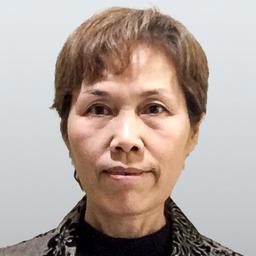The Chinese scientist who claimed to have created the world’s first gene-edited babies was quietly released from prison early this month after serving a three-year sentence, state media confirmed. His release sparked a new round of discussions about the ethics of gene-editing human embryos and the unexpected harm that may occur.
Lead researcher He Jiankui sparked an international backlash when, in November 2018 at a conference in Hong Kong, he revealed that he had altered the DNA of twin girl embryos who were born that month, calling them “Lulu” and “Nana.”
He said that his team used CRISPR technology to “edit out” the CCR5 gene in the embryos so that the baby girls were born “immune to AIDS” or have a natural ability to fight AIDS in the future. He claimed it was the first instance in the world.
Chinese state-run media initially praised the scientific breakthrough but later changed its tone after the case sparked widespread condemnation from the global scientific community for crossing ethical boundaries.
Secret Court Trial
The two other researchers involved in the project received lesser sentences and fines, according to the Chinese state-run Xinhua News Agency.The court stated the researchers were involved in the births of three gene-edited babies to two women, confirming reports of a third baby. All three researchers reportedly pleaded guilty during the secret trial, allowing only the defendants’ family members and select government officials to attend. Xinhua’s report cited privacy concerns for the trial being closed to the public.
According to court documents, He performed gene-editing and assisted reproduction on recruited couples with the male partner being infected with HIV.
After Lulu and Nana, a third child named “Amy” was born the following year using the same method.
He’s ‘Circle of Trust’
As the Chinese regime portrayed He as a “rogue actor,” Ryan Ferrell, a public relations specialist He hired, cataloged 60 people who were not part of the study but knew or suspected what He was doing before it became public.The article said that some criticized He when he brought them into the circle, while others appear to have welcomed his plans or did nothing. Several went out of their way to distance themselves from He after the case erupted.
According to the report, two of the onlookers in the circle were Michael Deem, He’s Ph.D. adviser at Rice University in Houston, Texas, and Yu Jun, a member of the Chinese Academy of Sciences (CAS) and co-founder of the Beijing Genomics Institute, a DNA sequencing company in Shenzhen.
Both Deem and Yu allegedly participated in the informed consent meeting with the couples who would participate in He’s experiment.
However, Deem’s lawyers later said he “did not meet the parents of the reported CCR5-edited children or anyone else whose embryos were edited” in a carefully worded statement.
Beijing’s ‘Thousand Talents’ Plan
Before He became the subject of international news, he studied in the United States, where he honed his entrepreneurial savvy, which later brought him wealth and ties to prominent scientists, according to the Science report.With scholarships, he earned an undergraduate physics degree at the University of Science and Technology of China in Hefei. In 2007, similar to many top Chinese graduate students, He went to the United States, joined Deem’s lab to work on a Ph.D. in biophysics, and where he studied and explored the properties of CRISPR—a technology that can be used to edit genes.
Deem introduced his student to Stephen Quake, a genome sequencing guru at Stanford, where He moved for a postdoctoral position in 2011. That same year, He responded to a recruitment ad on the website for SUSTech, a new, well-funded university in Shenzhen city that was looking to expand its research programs. In late 2011, He announced that he, SUSTech, and Deem would start a joint laboratory to find disease-specific genes that control immune responses.
With funding from Shenzhen’s Peacock Plan, part of Beijing’s “Thousand Talents Plan,” aiming to lure researchers back to the country, He set up shop at SUSTech in 2012.
The Thousand Talents Plan, an ambitious initiative to attract foreign experts to China, is of particular concern for U.S. officials. Established by the Chinese communist regime in December 2008 to bring academics and researchers to China, the program has been described by the U.S. National Intelligence Council as used to enable technology transfer to China from the United States.
Backed by the Chinese Regime
He’s “achievement” was initially touted by the Chinese state-run newspaper People’s Daily. However, following the international backlash, the Chinese Communist Party’s (CCP) attitude quickly changed.Two days after the positive reporting by People’s Daily, the Chinese authorities denounced He and ordered a temporary halt to research activities involving the editing of human genes.
Shenzhen Hemei Women and Children’s Hospital, where the gene-edited babies, Lulu and Nana, were born, also denied any involvement with He’s experiment.
According to materials He submitted to the Chinese clinical trials registry, the Shenzhen Municipal Science and Technology Innovation Council funded his project. However, the institution later denied the claim.
Following the many institutions’ sudden denials, a report by state-run media Xinhua claimed that local health authorities found that He “deliberately evaded oversight” and raised funds himself to carry out the procedure. The report added that he forged ethical review papers to enlist volunteers and that his actions were entirely motivated by his “personal fame and profit.”
Though Chinese authorities have denied their involvement, images of He’s “Ethical Review Application Form” had circulated online. Visible in the photo was an official stamp from the Shenzhen Hemei Women and Children’s Hospital and the signatures of its seven Ethics Committee members.
Meanwhile, China observers also note that such an expensive project would not have been possible without support from high-level authorities—especially as SUSTech claimed that He was on unpaid leave starting in February 2018.
Caoji, a Twitter user who introduced himself as a former science professor at a university in Shanghai, wrote in a post on Nov. 30, 2018, that he believes He’s experiment was promoted by high-ranking CCP officials and that SUSTech was responsible for helping He carry out the project in secret.
With hundreds of millions of yuan in funding at SUSTech, and given that He is a researcher associated with the CCP’s Thousand Talents Plan, Caoji believes that the experiment could not have occurred without state backing.
Caoji believes that He’s real mistake, in the eyes of the CCP, is not that he violated research ethics, but that he “inadvertently leaked a state secret.”
A Failed Experiment With Unintended Risks
In 2019, MIT Technology Review obtained copies of He’s unpublished manuscripts describing the creation of the first gene-edited babies born in 2018. The reviewers found that the text makes little attempt to prove that the twins are actually resistant to the virus and largely ignored data suggesting the editing went wrong.The review found that the researchers’ own data did not support their main claims. In particular, the paper stated that the team was “successfully” able to “reproduce” a known mutation in a gene called CCR5. The small percentage of people born naturally with this mutation, known as CCR5 delta 32, can be immune to infection by HIV. However, the results showed the team did not actually reproduce the known mutation. Rather, they created new mutations that may or may not lead to HIV resistance, and also risked off-target effects on the human subjects.
Off-target effects refer to the unintended genetic modifications that may occur on genes near the target gene and may result in unexpected harm to the subjects.
“The claim they have reproduced the prevalent CCR5 variant is a blatant misrepresentation of the actual data and can only be described by one term: a deliberate falsehood,” Fyodor Urnov, a genome-editing scientist at the University of California, Berkeley, said in the review.
Another major problem pointed out by the review was that He’s research team didn’t test whether the HIV immunity worked before creating living human beings.
“Before transferring the embryos, they could have kept them frozen while they made identical edits in laboratory cells and tested the effects of HIV on those cells [before creating the girls],” the review said.
In addition, one of the reviewers found that the editing of embryos in these cases was fundamentally “unnecessary” as the male partner’s semen can be washed to remove all seminal fluid that may harbor HIV.
“Extended sperm washing has been used for almost two decades in IVF laboratories worldwide and in thousands of patients; in our and others’ experience, it is safe for both parents and their future children and does not entail invasive manipulation of embryos,” Rita Vassena, the scientific director of Eugin Group, one of the leading international fertility groups.
Scientific and Ethical Concerns Remain
Although genome editing has been of great interest in preventing and treating human diseases in recent years, scientists are still determining whether this approach is safe and effective for use in humans. While technologies such as CRISPR-Cas9 were used to alter human genomes, most of the changes introduced were limited to somatic cells, which are cells other than egg and sperm cells (germline cells).Throughout the world, scientific research and experiments involving ethical issues must first pass the scrutiny of ethics committees. In recent years, the Chinese Communist Party (CCP) has conducted many experiments in the field of biomedical and genetic engineering that break human ethical boundaries.

China began implementing the Ethical Review of Biomedical Research Involving Humans on Dec. 1, 2016. However, 122 Chinese scientists who co-signed an open letter in 2018 to oppose gene-edited babies criticized China’s biomedical ethics review as a “sham.”





